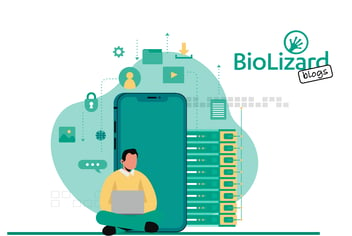Leveraging R&D data management to support data-driven R&D and innovation
Having a great R&D data management plan can provide considerable returns, both in generating the best scientific insights from your data… And in saving your organisation a lot of time and money. On top of that, effective data management is often a prerequisite for applying state-of-the-art machine learning or other AI applications to your data.
Today, let’s dive into a case in which BioLizard’s Data Management team helped a client to improve on their existing data infrastructure and data management systems, to create a more robust, resilient, and scalable data management solution that supports them in data-driven innovation – thereby improving their competitiveness in the life sciences industry!
Case study: integrating thousands of multi-omics data sets to identify novel biomarkers
This client had a big goal: to be able to leverage a wide range of current, historical, and future multi-omics data sets, in order to identify novel biomarkers and potential therapeutic drug targets. Due to BioLizard’s strong track record in digital transformation, data engineering, and multi-omics data integration in the life sciences, we were brought on board to tackle this challenge.

One key aim for this client was to apply advanced data analytics techniques in order to uncover these new potential drug targets and biomarkers. However, having a functional data management plan and data operations system in place was an important prerequisite for implementing scalable AI solutions. With this in mind, our Data Management team got to work.
Your R&D data management plan must align with your business goals
Before you can build a R&D data management plan that suits your company, it’s important to understand which data-based business insights are the most important for the company – both in the present and in the future. It’s also key to consider how these data-based business insights align with the company’s business strategy. In order to understand this context, BioLizard’s Data Management team started by creating a data catalogue, which encompassed all of the different types of data that supported the company’s unique selling points. Creating this clear overview of the context and goals of the company made it possible to design an effective, tailored data management plan that supported this client in getting the most out of all their current, past, and future data assets.
Dedicated groundwork is key to create a future-proof and scalable R&D data management plan
So, with those goals in mind, the Data Management team started out by conducting an audit. They interviewed key stakeholders in the company in order to get a picture of how “FAIR” (Findable, Accessible, Interoperable, and Reusable) the company’s data currently was. The Data Management team also identified data owners and created a data process flow – and all of this information was then inputted into a comprehensive data catalogue.

Next, together with the client, our Data Management team co-designed a roadmap for a new and improved, FAIR data management plan – always keeping in mind the organisation’s unique selling points and key business objectives. This roadmap provided advice on data architecture and data infrastructure solutions, and guidance on how to implement a more structured data governance process.
Data management boosts R&D efficiency and cross-department collaboration
In the end, this collaboration helped our client update their data infrastructure and data management processes, which spanned many different studies and data types. Now, this life sciences company is able to perform more complex analyses that integrate a range of data types, and historical data can be efficiently re-used to provide new biological insights. Their data is now FAIR – quickly findable, easily accessible, immediately interoperable, and readily retrievable – which brings data-driven insights to scientists’ fingertips. The recommendations of BioLizard’s Data Management team helped our client to not only improve on the existing data infrastructure and data management systems, but also to craft a vision for a future-proof, integrated and scalable data science solution.
So, what was the overall result? With the support of BioLizard’s Data Management team, this client’s research ecosystem is now more robust, resilient, and scalable, and supports them in data-driven innovation - thereby improving their competitiveness in the life sciences industry.
Learn more about R&D data management
If you want to learn more about this process of creating a comprehensive data management plan, you can find it explained in more detail in our recent blog article, A step-by-step guide to R&D data management, which was written in collaboration with Yves Muyssen, our COO and team lead for Data Management. If you’re interested in getting more details about BioLizard’s approach to R&D data management, you can also check out our recent webinar, produced in partnership with Flanders.bio, here.
 Does this sound like something that could benefit your life sciences organisation? If you’d like to work together with our Data Management team to get the most out of your most important asset – your data – reach out to us today.
Does this sound like something that could benefit your life sciences organisation? If you’d like to work together with our Data Management team to get the most out of your most important asset – your data – reach out to us today.
Reach out to us today.



